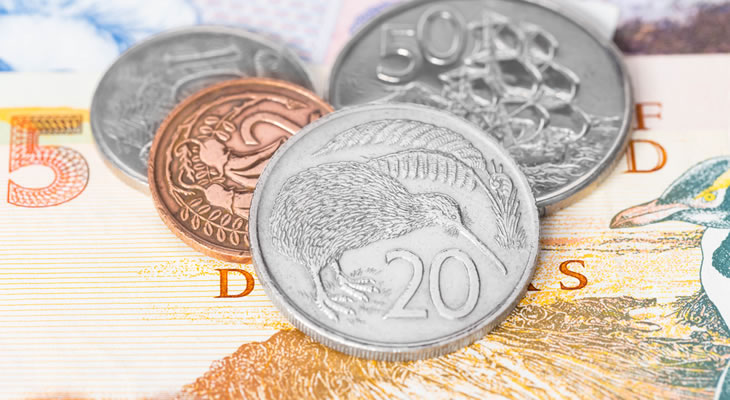Yesterday, the Pound Sterling (GBP) exchange rate recorded a healthy advantage over several major currencies, following rumours that the Bank of England (BoE) committee would be voting for higher interest rates in the next meeting. The GBP/AUD, GBP/NZD and GBP/CAD exchange rates all advanced by more than 1%. The Pound Sterling to Euro (GBP/EUR) exchange rate also gained by 0.8%, before reversing after Greek MPs accepted the reform proposals put forward by creditors.
The Pound Sterling was expected to keep rising against the Euro after optimistic forecasts for the UK’s June Loans for House Purchases and Retail Sales figures, but the GBP/EUR exchange rate has declined following a worse retail result than expected. The Pound Sterling also softened against the major commodity currencies, most significantly the New Zealand Dollar, where it fell by -1.1%.
Euro Strengthens Against Pound Sterling (EUR/GBP), Situation remains Fluid
Compared to yesterday’s drop in the Euro to Pound Sterling (EUR/GBP) exchange rate, today saw a resurgence for the common currency, with the Euro taking a 0.8% advantage in the EUR/GBP pairing. This comes after the UK’s June Retail Sales figures reported a -0.2% drop instead of the expected 0.4% gain. The Euro has also seen gains against most other major currencies, the exception being the New Zealand Dollar (EUR/NZD), where it fell by -0.7%.
The Euro is expected to continue fluctuating against its competitors for the foreseeable future; more immediately, the impending Euro Area Consumer Confidence Flash at 4pm predicts another monthly drop of -5.7, slightly lower than June’s result of -5.6.
US Dollar (USD) Exchange Rate Widely Unfavourable, Federal Reserve (FR) Interest Rate Revisions Impending
Despite the US Dollar experiencing positive growth yesterday with the release of the May Housing Price Index and the June Existing Homes Sales figures, today has seen a sharp decline against most of the rivals of the ‘Greenback’, which has only made minor gains against the Pound Sterling (USD/GBP), the Indian Rupee (USD/INR) and the South African Rand (USD/ZAR).
Janet Yellen, the Chair of the Federal Reserve, is expected to be hawkish about interest rates in the next policy meeting, although no revisions were expected to be made before September. Yellen recently commented on commodity prices, stating ‘It becomes increasingly difficult for commodity producers to move prices up, because they are already moving up in US dollars in local currency terms’.
Australian Dollar (AUD) gives Middling Results, Commodities Forecast causes Further Concerns
According to the World Bank, the prices for coal and iron ore (two of Australia’s major exports) are predicted to hit their lowest prices yet between August and December, before seeing gradual improvement again in 2016.
The AUD exchange rates reflect this, showing losses of over 0.3% against the New Zealand Dollar (AUD/NZD), the Canadian Dollar (AUD/CAD) and the Euro (AUD/EUR). Elsewhere, there have been gains of over 0.3% against the Chinese Yuan (AUD/CNY), the Pound Sterling (AUD/GBP), and the US Dollar (AUD/USD).
One of the biggest concerns for Australia’s commodities trade is the declining price of gold, which has been forecast by the World Bank to decrease every year until 2025. The worst-case predictions, made by Morgan Stanley, place the eventual price at $US800 per ounce.
New Zealand Dollar (NZD) Experiences Great Exchange Rate Gains over Competitors following Reserve Bank of New Zealand (RBNZ) Announcement
In the day’s most surprising news, the ‘Kiwi’ has bounced back strongly against rivals since yesterday’s losses. This comes despite the country’s ongoing problems with the dairy price collapse; in the last six weeks alone, prices have fallen by 20%.
The hawkish gains of the New Zealand Dollar come after the RBNZ announced its decision to reduce the benchmark interest from 3.25% to 3% yesterday; a cut was expected, but was predicted to be higher, which has resulted in the NZD gaining over 0.4% on the Australian Dollar (NZD/AUD), the Canadian Dollar (NZD/CAD), and the Euro (NZD/EUR). The exchange rate over the Chinese Yuan (NZD/CNY), the Pound Sterling (NZD/GBP) and the US Dollar (NZD/GBP) also increased by over 0.9%.
Canadian Dollar (CAD) sees Mixed Results ahead of Retail Sales Figures
The Canadian Dollar has experienced a slight loss against the Euro (CAD/EUR) and the New Zealand Dollar (CAD/NZD) today, but has conversely gained by more than 0.5% on the Pound Sterling (CAD/GBP) and the US Dollar (CAD/USD). Forecasts towards Canada’s month-on-month (MoM) Retail Sales figure for May were positive, with an expected consumer spending increase of 0.6%. An on or above forecast result would support the ‘Loonie’, but CAD remains at risk due to falling commodity prices and unhealthy competition, in the form of the US Dollar’s potential interest rate increase before the close of the year.


Comments are closed.